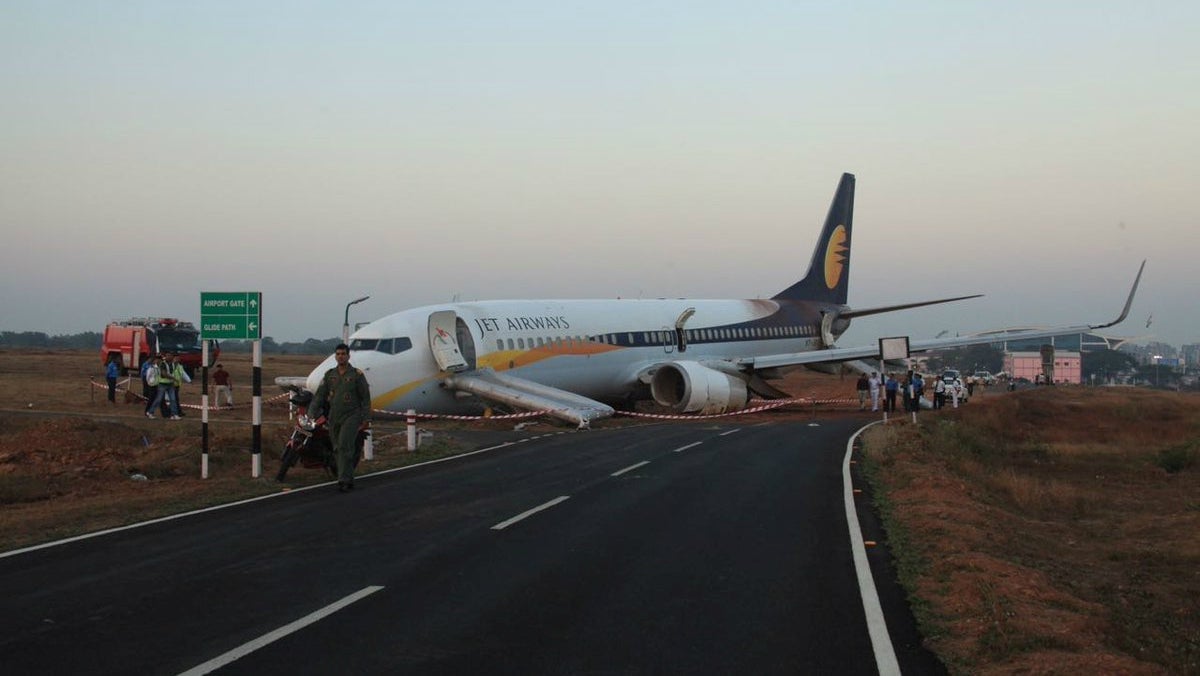From Jet Airways to Spicejet, it is turning out to be a harrowing morning for Indian flyers today
It’s been a perilous day for some air passengers in India.


It’s been a perilous day for some air passengers in India.
Early on Tuesday (Dec. 27), a Mumbai-bound Jet Airways flight skidded off the runway at Goa’s Dabolim airport during takeoff. The 154 passengers, and seven crew members, onboard flight number 9W 2374 are safe, the airline reported, although a dozen individuals sustained minor injuries during the evacuation process.
The aircraft, which had arrived from Dubai, reportedly spun out of control after an aborted takeoff. Subsequently, while evacuation was underway, the aircraft titled forward, leading to further panic among passengers. The exact cause of the accident is still to be ascertained.
Meanwhile, at New Delhi’s Indira Gandhi International Airport, two passenger airplanes had a close call shortly after the Goa incident.
One Indigo flight is thought to have just arrived at the airport, while a SpiceJet plane was preparing for takeoff. The two aircraft reportedly came “face-to-face”, risking the safety of over a hundred passengers, before evasive action from the pilots averted a potential mishap.
“SpiceJet crew observed another aircraft on the same taxiway in the opposite direction. Acting promptly, the SpiceJet crew immediately stopped the aircraft and intimated the ATC (air traffic control),” SpiceJet explained in a series of tweets on the incident.
With nearly 100 million domestic passengers in 2016 alone, India is the fastest-growing aviation market in the world—but safety concerns remain.
In particular, runway overruns and excursions are worrisome, according to data presented (pdf) by the Director General of Civil Aviation (DGCA), India’s aviation regulator, to the International Civil Aviation Organization. The DGCA has a “State Safety Plan” (pdf) with specified targets to improve safety measures across India’s aviation industry.
Here are some definitions to understand the above data better:
- An unstabilised approach is one in which the airplane’s indicated airspeed, pitch attitude, flap and landing gear position—the airplane’s configuration—and/or glidepath, changes in the final moments of the approach. Changes to any of these variables close to the ground will make it harder for the pilot to guide the aircraft to a smooth and accurate touchdown. (Source)
- A non-precision approach is an instrument approach and landing which utilises lateral guidance but does not utilise vertical guidance. Non-precision approaches are often conducted with less use of automated systems than precision approaches. Lateral guidance refers to the guidance provided by a ground-based navigation aid, computer-generated navigation data displayed to the pilot of an aircraft, or a controller interpreting the display on radar screen. (Source)